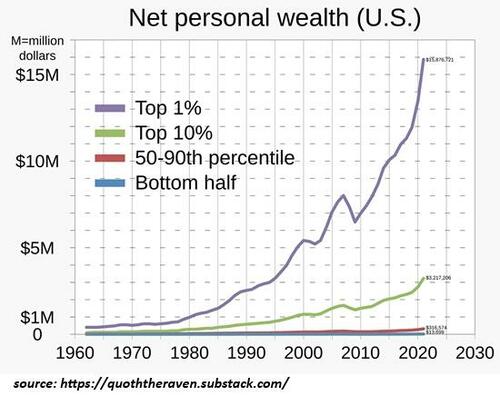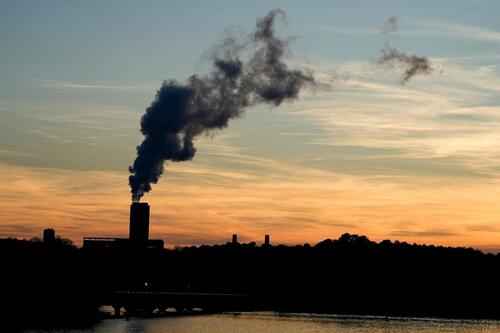US Natural Gas Consumption To Hit New Record In 2025
Authored by Naveen Athrappully via The Epoch Times,
Natural gas consumption in the United States is forecast to increase 1 percent and set a record of 91.4 billion cubic feet per day (Bcf/d) on average in 2025, according to an Aug. 25 statement from the Energy Information Administration (EIA).
The EIA expects “natural gas consumption to increase across all sectors except for electric power, which had been the source of most natural gas consumption growth in the previous decade” in its latest Short-Term Energy Outlook report.
At the start of 2025, natural gas consumption hit a record of 126.8 Bcf/d, which is 5 percent more than in January 2024.
Consumption typically peaks in the colder months of January and February when demand for residential and commercial heating is highest.
“Natural gas remains the most prevalent source of electricity generation in the United States, but so far in 2025 natural gas has lost market share in the electric power sector to coal, solar, and wind,” said the EIA.
According to EIA numbers, gas accounted for a 40 percent share of U.S. electricity generation, with coal making up 17 percent, renewables 24 percent, and nuclear 18 percent in 2025. Two years back, natural gas made up 42 percent, and renewables 22 percent.
Electricity demand growth is expected to rise about 3 percent in 2025 and 4.5 percent in 2026, owing to the expansion of new data centers and artificial intelligence (AI) infrastructure in the country.
AI industry leaders such as Google are turning to nuclear reactors as part of their efforts to ensure energy sufficiency.
Energy consumption increases coincide with higher prices for end users, along with grid stability concerns.
American Energy Usage
The EIA forecasted in a May 14 statement that residential electricity prices this year are expected to rise by 13 percent from 2022 prices.
“Parts of the country with relatively high electricity prices may experience greater price increases than those with relatively low electricity prices,” the EIA stated.
In a June 12 report, the North American Electric Reliability Corp (NERC) warned that large data centers pose a “significant near-term reliability challenge” for the U.S. power grid stability.
The Trump administration has promoted the discovery and usage of natural gas in the country as part of ensuring the generation of reliable and affordable electricity.
In a Jan. 20 executive order, President Donald Trump directed all agencies to remove unnecessary regulatory burdens on energy sources such as natural gas and expand their exploration.
Stemming from the One Big Beautiful Bill Act, the Department of the Interior (DOI) unveiled a long-term schedule for at least 30 offshore oil and gas lease sales in the Gulf of America, which will account for roughly 14–15 percent of U.S. crude oil production and offshore energy output, according to an Aug. 19 press release.
“The One Big Beautiful Bill Act is a landmark step toward unleashing America’s energy potential,” said Interior Secretary Doug Burgum.
“Under President Trump’s leadership, we’re putting in place a bold, long-term program that strengthens American Energy Dominance, creates good-paying jobs and ensures we continue to responsibly develop our offshore resources.”
The department is also removing some of the regulatory hurdles in energy generation to lower costs.
“Under the One Big Beautiful Bill Act, Bureau of Safety and Environmental Enforcement … must approve commingling requests unless safety or resource recovery would be harmed,” said an Aug. 22 report from the DOI.
“Downhole commingling is the production of oil or natural gas from multiple reservoirs through a single well. The process allows for more efficient and cost-effective production.”
Environmental group Sierra Club criticized the administration for reversing the prior administration’s focus on renewable energy sources such as wind and solar and shifting toward conventional sources like gas and oil. Holly Bender, chief program officer at the organization, said energy prices are going up because of the Trump administration’s “pro-fossil fuel policies.”
Tyler Durden
Thu, 08/28/2025 – 13:40













